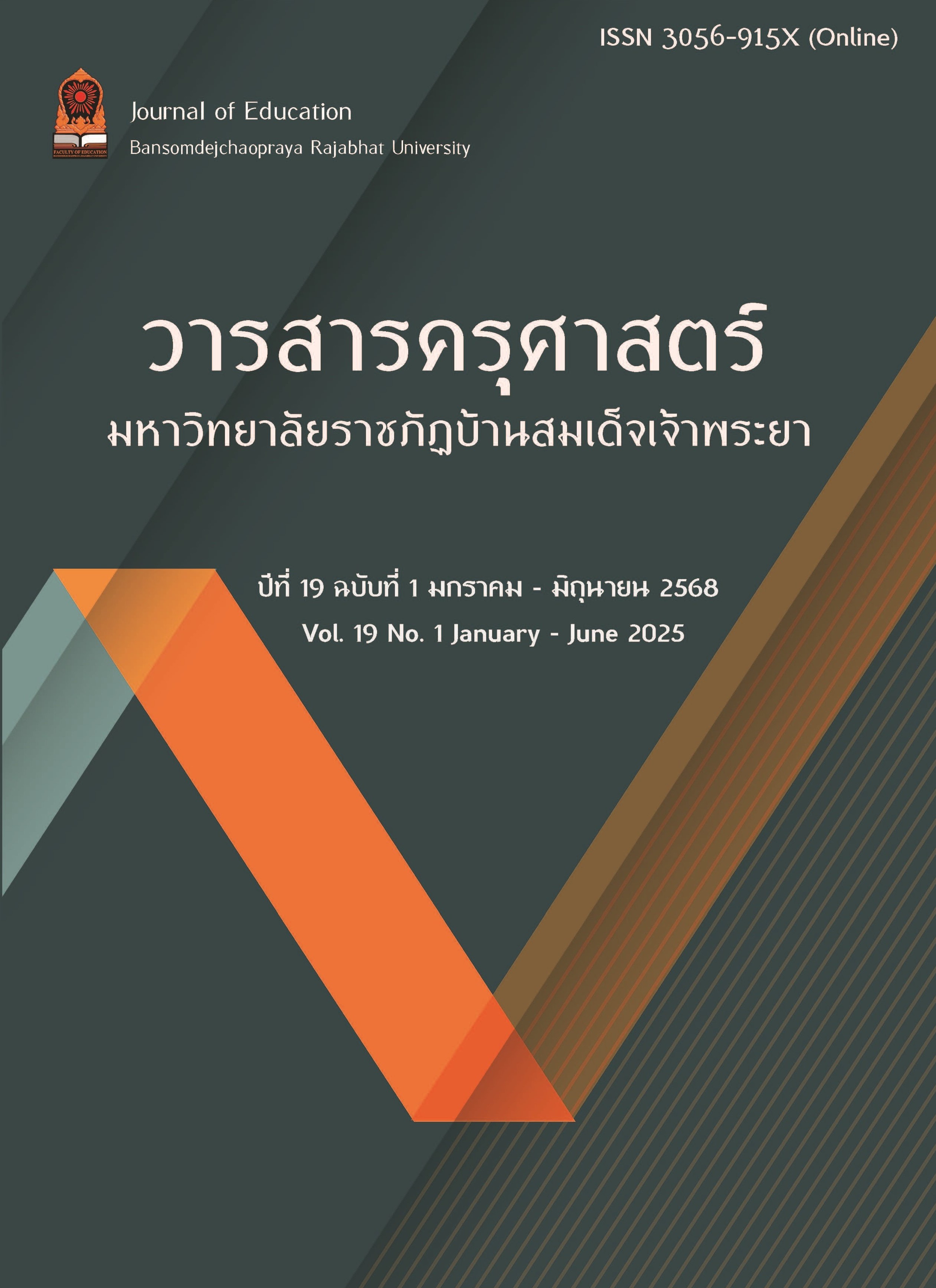The Development of the Taling Chan Health Constitution through a Participatory Process
Keywords:
health constitution, well-being, Taling Chan districtAbstract
The development of the Taling Chan District Health Constitution aims to enhance community well-being through the participation of multiple sectors, including government agencies, academic institutions, civil society organizations, and local residents. This health constitution seeks to establish strategic guidelines for sustainable community health development and problem-solving, encompassing six key dimensions: (1) Cross-sector collaboration — promoting collaboration between agencies and the public to shape the direction of community well-being; (2) Economic and social aspects — focusing on job creation, income generation, community savings, and sustainable resource management to ensure economic and social stability; (3) Environmental aspects — emphasizing waste management, wastewater treatment, expansion of green spaces, air pollution monitoring, and the promotion of organic farming to foster a health-supportive environment; (4) Health aspects — covering health promotion, disease prevention, treatment, and rehabilitation through initiatives such as regular health check-ups, safe food campaigns, chronic disease management, physical activity promotion, and alternative medicine; (5) Health Education — providing knowledge on nutrition, exercise, disease prevention, training for community health leaders, and supporting “Health Promoting Schools” to instill healthy behaviors from an early age; and (6) Health Constitution Implementation — establishing committees to monitor, evaluate, and regularly update the constitution in response to changing conditions. The Taling Chan District Health Constitution is more than just a health policy; it is a participatory mechanism that empowers communities, increases public awareness, and promotes active civic engagement. It aims to achieve sustainable well-being across all dimensions and age groups by embracing genuine participation from all sectors.
Downloads
References
สำนักงานคณะกรรมการสุขภาพแห่งชาติ. (2564). ธรรมนูญสุขภาพกรุงเทพมหานคร. กรุงเทพฯ: สำนักงานคณะกรรมการสุขภาพแห่งชาติ.
สำนักงานคณะกรรมการสุขภาพแห่งชาติ. (2567). ธรรมนูญสุขภาพเขตตลิ่งชัน พ.ศ. 2567. กรุงเทพฯ: บียอนด์พับลิสชิ่ง.
Arnstein, S. R. (1969). A ladder of citizen participation. Journal of the American Planning Association, 35(4), 216–224. Retrieved form https://doi.org/10.1080/01944366 908977225.
Fung, A. (2006). Varieties of participation in complex governance. Public Administration Review, 66(1), 66–75. Retrieved form https://doi.org/10.1111/j.1540-6210.2006. 00667.x
Health Station. (2564). ขับเคลื่อนธรรมนูญสุขภาพกรุงเทพมหานคร 13 เขต. Retrieved form https://main.healthstation.in.th/news/show/10
Inter-Parliamentary Union. (2024). Citizen-initiated legislation: The Clean Air Bill in Thailand. Retrieved form https://www.ipu.org/innovation-tracker/story/citizen-initiated-legislation-clean-air-bill-in-thailand
Mansbridge, J. (2014). Should blacks represent blacks and women represent women? A contingent "yes". Journal of Political Philosophy, 22(3), 311–338. Retrieved form https://doi.org/10.1111/jopp.12018
Organisation for Economic Co-operation and Development. (2025). Regulatory reform in Thailand. OECD Publishing. Retrieved form https://www.oecd.org/en/ publications/regulatory-reform-in-thailand_7892759c-en.html
Stratford Journals. (2022). Public participation and performance of government projects in Thailand. Journal of Public Policy & Governance, 6(1), 1–15. Retrieved form https://www.stratfordjournals.com/journals/index.php/journal-of-public-policy-governa/article/download/1225/1536/3786
Sullivan, H., & Skelcher, C. (2002). Working across boundaries: Collaboration in public services. Palgrave Macmillan.
Thampanishvong, K., & Saelawong, T. (2020, October 21). People's participation key to better public services. Thailand Development Research Institute. Retrieved form https://tdri.or.th/en/2020/10/peoples-participation-key-to-better-public-services/
World Health Organization. (2022). Thailand country cooperation strategy 2022–2026. WHO Regional Office for South-East Asia. Retrieved form https://iris.who.int/ bitstream/handle/10665/373066/9789290210771-eng.pdf
Downloads
Published
How to Cite
Issue
Section
License
Copyright (c) 2025 Faculty of Educaion Bansomdejchaopraya Rajabhat University

This work is licensed under a Creative Commons Attribution-NonCommercial-NoDerivatives 4.0 International License.
บทความที่ได้รับการตีพิมพ์เป็นลิขสิทธิ์ของคณะครุศาสตร์ มหาวิทยาลัยราชภัฏบ้านสมเด็จเจ้าพระยา
ข้อความที่ปรากฏในบทความแต่ละเรื่องในวารสารวิชาการเล่มนี้เป็นความคิดเห็นส่วนตัวของผู้เขียนแต่ละท่านไม่เกี่ยวข้องกับมหาวิทยาลัยราชภัฏบ้านสมเด็จเจ้าพระยา และคณาจารย์ท่านอื่นๆในมหาวิทยาลัยฯ แต่อย่างใด ความรับผิดชอบองค์ประกอบทั้งหมดของบทความแต่ละเรื่องเป็นของผู้เขียนแต่ละท่าน หากมีความผิดพลาดใดๆ ผู้เขียนแต่ละท่านจะรับผิดชอบบทความของตนเอง



